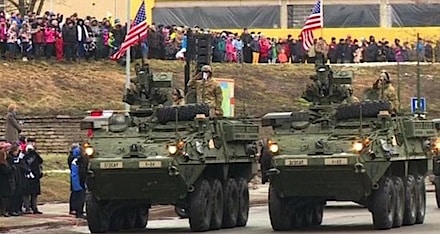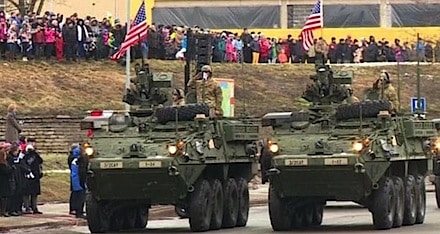This week NATO delivered more than 100 tanks and heavy armored units, and several thousand soldiers including US troops, to Latvia, on the border with Russia, in its “Operation Atlantic Resolve.” US Army General John O’Conner made no secret that the military operation was aimed at fighting Russia, stating that the delivery of the heavy weapons to Latvia would “demonstrate resolve to President Putin and Russia that collectively we can come together.”
The tanks would stay, he added, “for as long as required to deter Russian aggression.”
As the western tanks and soldiers arrived, Assistant Secretary of State Victoria Nuland told the US Senate that she could “confirm” that new Russian weapons were being delivered to Ukraine, but she provided no details or evidence and the OSCE monitors on the ground have not reported any such movement.
According to RPI Academic Advisor John Laughland, “the purpose of these [exercises] is to ratchet up the tension with Russia to keep applying more and more aggressive initiatives, to put Russia ever further on the back foot.”
Asked whether such a NATO show of force on Russia’s border does not put the Minsk peace process in jeopardy, Laughland answered:
The Western powers have never been interested in peace processes. What they are interested in is victory. … The point about Minsk is that France and Germany have a slightly, and I emphasize, slightly different perception from Washington, London, and Brussels, the NATO headquarters. France and Germany are to some extent trying to find a peace agreement. But they are being fought by the Americans and by the British, to put it very simply.
The end goal of the EU/NATO saber-rattling targeting Russia, he said, is to “reinforce the existing supranational institutions of the West – the European Union, on the one hand, and the transatlantic bond on the other.” Russia as the enemy will give some meaning and legitimacy to the ongoing maintenance of the European Union and NATO. The EU leadership is firmly behind this project, he added, but it remains to be seen how much of the population supports such a gambit.
Watch Laughland’s interview:


